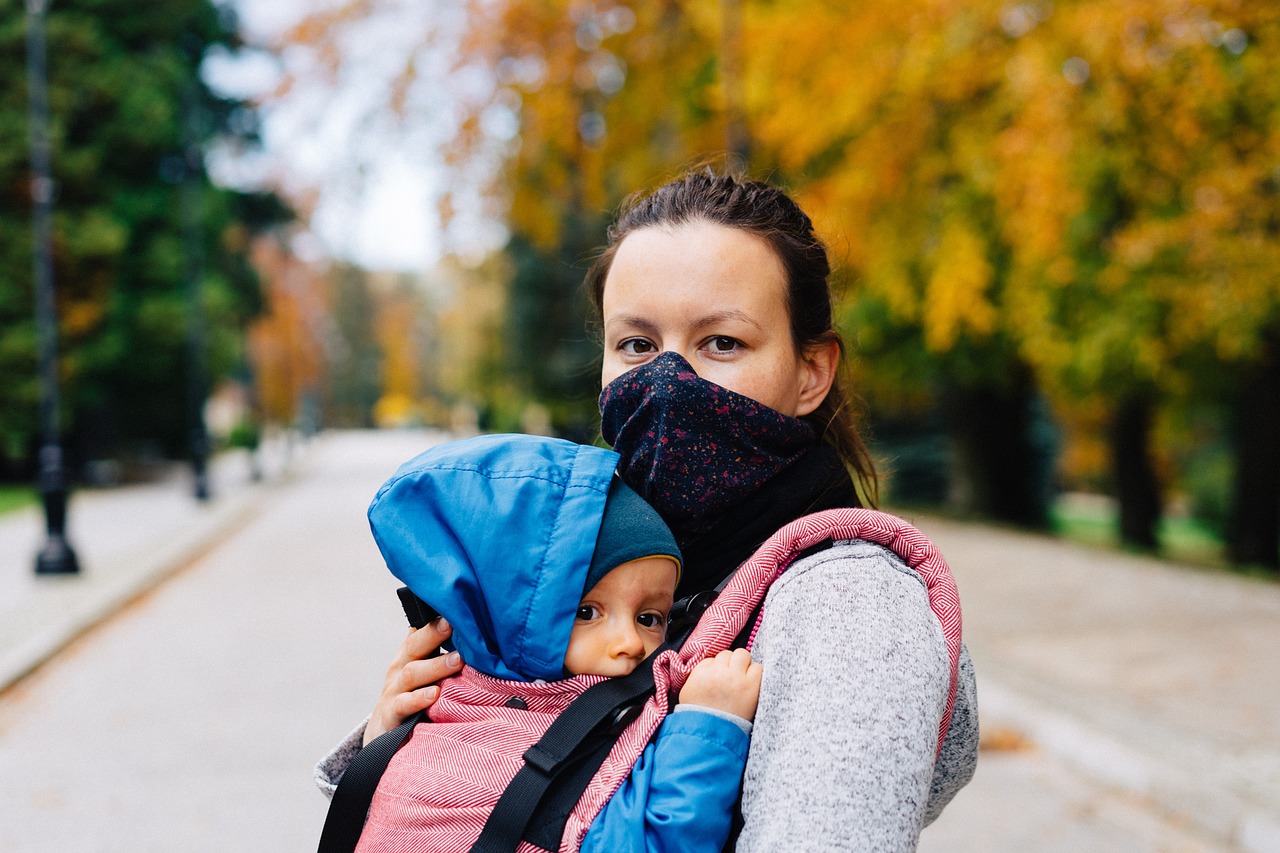Safety Strategies Based on Human Behavior Study
In today’s fast-paced world, ensuring safety across various environments is more crucial than ever. With the rise of complex systems and diverse workplaces, traditional safety measures alone are often insufficient. This is where the fascinating intersection of psychology and safety comes into play. By delving into human behavior studies, we can uncover valuable insights that inform more effective safety strategies. Understanding the psychological factors that influence how individuals perceive risk and respond to safety protocols can lead to innovative solutions that not only enhance safety but also promote a culture of awareness and responsibility.
Imagine walking into a factory where safety signs are plastered everywhere, yet accidents still happen. Why? The answer often lies in human behavior. People don’t just follow rules blindly; their actions are influenced by a myriad of factors, including their environment, social dynamics, and personal motivations. By studying these behaviors, organizations can tailor their safety strategies to resonate more deeply with their employees and the public. This article aims to explore various safety strategies informed by human behavior studies, examining how understanding these psychological factors can enhance safety measures across different environments and industries.
Examining the psychological underpinnings of human behavior reveals critical insights into how individuals respond to safety protocols and risk, informing better strategies for safety implementation. For instance, consider how fear of consequences can sometimes lead to compliance, but it can also create a culture of avoidance where individuals don’t genuinely engage with safety practices. This duality highlights the importance of fostering an environment where safety is not just a checkbox but a core value. By understanding the motivations behind human behavior, organizations can create safety programs that are not only effective but also embraced by their teams.
Identifying common behavioral triggers that lead to unsafe actions is crucial in developing interventions that mitigate risks. These triggers can range from external factors like workplace design to internal factors such as stress and fatigue. For example, research shows that when employees feel rushed or overwhelmed, they are more likely to overlook safety protocols. By recognizing these triggers, organizations can implement strategies that address them directly, such as redesigning workflows to reduce pressure or providing adequate breaks to help employees recharge.
Perception plays a significant role in how individuals assess risks and make decisions. Understanding these perceptions can lead to more effective safety communications and training programs. When people perceive a task as low-risk, they may neglect safety measures, which can lead to accidents. Therefore, it’s essential for organizations to communicate the actual risks involved in various tasks clearly. This can be achieved through engaging training sessions that highlight real-life scenarios and encourage open discussions about safety perceptions.
The surrounding environment significantly impacts individual behavior. Analyzing environmental factors can help create safer spaces that naturally encourage safer actions and reduce risks. For instance, well-lit areas, clear signage, and organized workspaces can enhance safety by making hazards more visible and reducing the likelihood of accidents. Organizations should consider conducting regular assessments of their environments to identify areas for improvement.
Social dynamics, including peer pressure and group behavior, heavily influence safety practices. Recognizing these influences can aid in developing strategies that foster a culture of safety. When individuals see their peers prioritizing safety, they are more likely to follow suit. This can be reinforced through team-building activities that emphasize safety as a collective responsibility. By creating an environment where safety is a shared value, organizations can cultivate a proactive approach to risk management.
Motivation is key to encouraging safe behavior. By understanding what drives individuals to comply with safety protocols, organizations can implement more effective incentive programs. For example, rewards for safe behavior can reinforce positive actions and encourage others to follow. However, it’s crucial to ensure that these incentives align with genuine safety practices rather than merely rewarding compliance.
Effective training and education initiatives are essential for instilling a safety-first mindset. Tailoring these programs based on behavioral studies can enhance their effectiveness and retention. Engaging training methods, such as interactive workshops and real-life simulations, can significantly improve learning outcomes. For instance, using role-playing scenarios can help employees practice their responses to potential hazards in a controlled environment, making them more prepared for real situations.
Incorporating technology, such as virtual reality and simulations, into safety training can engage learners and provide realistic experiences that reinforce safe practices. Imagine donning a VR headset and finding yourself in a simulated hazardous environment where you must navigate potential dangers. This immersive experience can dramatically increase retention and understanding of safety protocols, making training not just informative but also memorable.
Regular evaluation of training programs is crucial to ensure their effectiveness. Implementing feedback mechanisms can help organizations refine their approaches and improve overall safety outcomes. This could involve surveys, focus groups, or even observation of safety practices post-training. By continually assessing and adapting training methods, organizations can stay ahead of potential safety challenges and foster a culture of continuous improvement.
- What are the key factors influencing human behavior in safety? Understanding psychological triggers, environmental influences, and social dynamics are essential.
- How can organizations motivate employees to prioritize safety? By implementing incentive programs that reward safe behavior and fostering a culture of safety.
- Why is training important for safety? Training equips employees with the knowledge and skills to handle risks effectively.
- How can technology improve safety training? Technology can provide immersive experiences that enhance learning and retention.

Understanding Human Behavior in Safety
When it comes to safety, understanding human behavior is like holding the key to a treasure chest full of valuable insights. Why do people sometimes ignore safety protocols? What drives them to take risks, even when they know the consequences? These questions are at the heart of safety studies, and by diving into the psychological underpinnings of human actions, we can uncover critical information that helps improve safety measures across various environments.
At its core, human behavior is influenced by a multitude of factors, including emotions, perceptions, and social dynamics. For instance, when individuals feel stressed or anxious, their ability to assess risks accurately can diminish significantly. This is why understanding the emotional state of employees or the public during safety training or emergency situations is essential. If we can recognize these emotional triggers, we can tailor our safety strategies to better address them.
Moreover, people's perceptions of risk are often distorted by their experiences and the information they receive. For example, if someone has never experienced a workplace accident, they may underestimate the importance of wearing protective gear. This disconnect between perception and reality can lead to dangerous situations. To combat this, organizations must focus on effective communication that not only conveys the risks but also resonates with individuals on a personal level. Engaging stories, real-life examples, and relatable scenarios can bridge this gap and foster a culture of safety.
Another fascinating aspect of human behavior in safety is the influence of the environment. The spaces we inhabit can either promote safe practices or encourage risky behaviors. For instance, cluttered workspaces can lead to accidents, while well-organized environments can facilitate safety. By analyzing environmental factors, organizations can design spaces that naturally encourage safer actions. This concept is often referred to as environmental design, and it's a powerful tool in enhancing safety.
Lastly, we cannot overlook the role of social influences on safety behavior. The people around us—friends, colleagues, and even strangers—can significantly impact our actions. Peer pressure, for instance, can lead individuals to disregard safety protocols, especially in group settings. Understanding these social dynamics is crucial for developing strategies that foster a culture of safety. By promoting positive peer influences and encouraging open discussions about safety practices, organizations can create an environment where everyone feels empowered to act safely.
In summary, grasping the intricacies of human behavior is vital for enhancing safety measures. By considering emotional states, perceptions of risk, environmental factors, and social influences, organizations can craft more effective safety protocols. This holistic approach not only protects individuals but also cultivates a culture of safety that benefits everyone.
- Why is understanding human behavior important in safety? Understanding human behavior helps identify why people may not follow safety protocols and how to encourage safer practices.
- How can emotions affect safety behavior? Emotions like stress or anxiety can impair judgment and lead to unsafe decisions.
- What role does the environment play in safety? A well-designed environment can promote safe actions, while a cluttered or unsafe space can increase the risk of accidents.
- How do social dynamics influence safety practices? Peer pressure and group behavior can significantly impact an individual's willingness to adhere to safety measures.

Behavioral Triggers for Unsafe Actions
Understanding the behavioral triggers that lead individuals to engage in unsafe actions is crucial for developing effective safety strategies. These triggers often stem from a complex interplay of psychological, environmental, and social factors. For instance, when people are under stress or in a hurry, they may disregard safety protocols, believing that they can manage the risks involved. This kind of thinking is akin to driving over the speed limit just to save a few minutes; the immediate goal overshadows the potential consequences.
Moreover, perception of risk plays a significant role in triggering unsafe behavior. If individuals perceive a task as low-risk, they are more likely to take shortcuts or skip safety measures. For example, a construction worker might choose to forego wearing a hard hat if they believe the risk of falling objects is minimal. This misjudgment can lead to severe injuries, highlighting the need for clear communication about risks involved in various tasks.
Another important aspect is the environmental context. Environments that are cluttered, poorly lit, or lack proper signage can contribute to unsafe actions. Imagine trying to navigate a dark room filled with obstacles; the chances of tripping or bumping into something increase dramatically. Organizations must assess their environments and make necessary adjustments to promote safer behaviors actively.
Social influences also significantly impact safety behavior. Peer pressure can encourage individuals to engage in unsafe practices, especially in group settings. For example, if one employee decides to skip wearing personal protective equipment (PPE) and others follow suit, the entire team may inadvertently create a culture where safety is compromised. Recognizing these social dynamics is essential for fostering a culture of safety within organizations.
To effectively combat these behavioral triggers, organizations can implement a variety of strategies:
- Awareness Programs: Educating employees about the risks associated with unsafe behaviors can help shift perceptions and encourage compliance with safety protocols.
- Environmental Modifications: Making physical changes to the workplace, such as improving lighting or reducing clutter, can minimize opportunities for unsafe actions.
- Peer Support Systems: Encouraging team members to look out for one another can create a supportive environment where safety is prioritized.
In conclusion, by understanding and addressing these behavioral triggers, organizations can significantly enhance their safety measures. It’s about creating an environment where safety is ingrained in the culture and where every individual feels responsible for their own safety and the safety of those around them. This proactive approach can ultimately lead to a substantial reduction in accidents and injuries, fostering a safer workplace for everyone.
1. What are behavioral triggers for unsafe actions?
Behavioral triggers are psychological or environmental factors that lead individuals to engage in unsafe practices, often due to misjudgment or external pressures.
2. How can organizations identify these triggers?
Organizations can identify triggers through employee surveys, incident reports, and observational studies that highlight patterns of unsafe behavior.
3. What role does peer pressure play in safety behavior?
Peer pressure can lead individuals to conform to unsafe practices, especially in group settings, which underscores the importance of fostering a culture of safety.
4. How can training help mitigate unsafe behaviors?
Effective training programs can educate employees about risks, reinforce safety protocols, and encourage a mindset focused on safety-first practices.

The Role of Perception in Safety
When we talk about safety, one of the most fascinating yet often overlooked aspects is perception. How individuals perceive risks and safety measures can significantly influence their behavior and decision-making processes. Have you ever noticed how some people seem to take risks more lightly than others? This difference in perception can stem from various factors, including personal experiences, cultural backgrounds, and even media portrayals of risk. Understanding these nuances is crucial for organizations aiming to enhance safety protocols.
For instance, consider a construction site where safety gear is mandatory. Some workers may perceive wearing a hard hat as an inconvenience rather than a protective measure. This perception can lead to unsafe behavior, such as neglecting to wear the hat altogether. To combat this, it’s essential to communicate the importance of safety equipment effectively. By sharing real-life stories or statistics about accidents that could have been prevented with proper gear, organizations can shift perceptions and encourage compliance.
Moreover, the context in which safety information is presented can also alter perceptions. For example, if safety training is delivered in a dry, monotonous manner, employees might tune out the critical messages. On the other hand, interactive and engaging training sessions can change the way individuals view safety protocols. Incorporating elements like role-playing, simulations, or even gamified learning can make safety feel more relevant and important. This approach not only captures attention but also fosters a deeper understanding of safety practices.
Another key factor in perception is the social environment. People are often influenced by their peers, and if a majority of coworkers disregard safety measures, an individual might feel pressured to do the same. This social dynamic can create a culture where unsafe behaviors are normalized. To counteract this, organizations need to promote a culture of safety where positive behaviors are recognized and rewarded. By highlighting stories of employees who prioritize safety, companies can reshape perceptions and encourage everyone to adopt safer practices.
In summary, the role of perception in safety is multifaceted and critical for developing effective safety strategies. By understanding how individuals perceive risks and safety measures, organizations can tailor their communication and training efforts to foster a culture of safety. This not only enhances compliance but also ultimately leads to a safer working environment for everyone involved.
- What is the importance of perception in safety?
Perception influences how individuals assess risks and adhere to safety protocols, making it crucial for effective safety measures. - How can organizations improve safety perceptions?
By using engaging training methods, sharing real-life stories, and fostering a positive safety culture, organizations can enhance safety perceptions. - What role does social influence play in safety behavior?
Social dynamics can encourage or discourage safe practices; recognizing this can help organizations develop better strategies for promoting safety.

Influence of Environment on Behavior
Have you ever noticed how the atmosphere around you can completely change your mood or actions? It’s a fascinating phenomenon that plays a crucial role in safety behaviors. The environment can be a powerful influencer, subtly guiding our decisions and actions without us even realizing it. For instance, think about how a cluttered workspace can lead to distractions and increase the likelihood of accidents. When the environment is chaotic, it’s hard to focus on safety protocols. Conversely, a well-organized and clean space promotes a sense of order and encourages individuals to adhere to safety practices.
Let’s dive deeper into what makes an environment effective in promoting safe behaviors. One key factor is visibility. In workplaces where hazards are clearly marked and visible, individuals are more likely to take them seriously. This isn’t just about having bright warning signs; it’s about creating a culture where safety is visibly prioritized. For example, using bright colors and clear labels can significantly enhance awareness and compliance among employees.
Another aspect to consider is accessibility. If safety equipment is hard to reach or poorly maintained, people are less likely to use it. Imagine a fire extinguisher hidden behind a stack of boxes – it might as well not exist! Ensuring that safety resources are easily accessible reinforces the message that safety is a priority. This can include everything from proper placement of first-aid kits to ensuring that personal protective equipment (PPE) is readily available and in good condition.
Moreover, the impact of social cues in an environment cannot be overstated. When individuals observe their peers engaging in safe practices, they are more likely to follow suit. This is where the concept of social proof comes into play. If a workplace fosters a culture of safety, where everyone is committed to following protocols, it becomes the norm. On the flip side, if unsafe behaviors are tolerated, they can quickly become the standard. It’s a delicate balance, and understanding this dynamic can help organizations shape environments that promote safety.
Lastly, let’s not forget about the emotional climate of an environment. A supportive and positive atmosphere can motivate individuals to prioritize safety. When employees feel valued and respected, they are more likely to take ownership of their safety responsibilities. Creating an environment where open communication is encouraged allows individuals to voice concerns about safety without fear of retribution. This can lead to a more proactive approach to identifying and mitigating risks.
In summary, the influence of the environment on behavior is profound. By recognizing the elements that contribute to a safer environment, organizations can implement changes that not only enhance safety but also foster a culture of care and responsibility. The key lies in understanding that our surroundings shape our actions, and by optimizing these spaces, we can create safer workplaces and communities.
- How does the environment affect safety behavior? The environment can influence safety behavior through visibility, accessibility of safety equipment, social cues, and the emotional climate of the workplace.
- What role do social dynamics play in safety practices? Social dynamics, such as peer pressure and group behavior, can heavily influence individuals' adherence to safety protocols.
- Can a positive work environment improve safety compliance? Yes, a supportive and positive atmosphere encourages individuals to prioritize safety and take ownership of their responsibilities.
- How can organizations create a safer environment? Organizations can create a safer environment by ensuring proper visibility of hazards, maintaining accessibility to safety resources, fostering a culture of safety, and promoting open communication.

Social Influences on Safety Behavior
When we think about safety behavior, it's easy to focus solely on individual actions and decisions. However, the truth is that social influences play a monumental role in shaping how we behave in safety-critical situations. Have you ever noticed how you might act differently in a group compared to when you’re alone? This phenomenon is known as social dynamics, and it can significantly impact safety practices in various environments, from workplaces to public spaces.
One of the most prevalent social influences is peer pressure. When individuals are surrounded by their peers, they often feel compelled to conform to the group’s behavior, even if it contradicts established safety protocols. For instance, if a group of coworkers decides to skip wearing safety gear because "everyone else is doing it," an individual may feel pressured to follow suit, despite knowing the risks. This is why fostering a strong culture of safety within teams is crucial. When safety becomes a shared value, individuals are more likely to uphold these standards, creating a ripple effect that enhances overall safety.
Moreover, leadership behavior cannot be overlooked. Leaders set the tone for safety culture in an organization. If leaders prioritize safety and consistently model safe behaviors, employees are more inclined to follow suit. This creates a positive feedback loop where safe practices are reinforced through observation and imitation. Conversely, if leaders engage in risky behaviors or disregard safety protocols, it sends a message that safety is not a priority, leading to increased unsafe actions among employees.
Additionally, the influence of social norms plays a significant role in shaping safety behavior. Social norms are the unwritten rules about how to behave in a particular group. For example, if the norm is to always wear a helmet while cycling, individuals are more likely to wear one, not just for their safety, but to fit in with the group. Understanding these norms can help organizations identify areas where they can promote safer practices. By actively working to shift norms towards prioritizing safety, organizations can create an environment where safe behavior is the expected standard.
Another key aspect is the role of communication. Effective communication about safety protocols and the importance of adherence can significantly influence behavior. When individuals clearly understand the risks associated with unsafe actions and the benefits of following safety guidelines, they are more likely to comply. This is where social influence can be harnessed positively—through campaigns, discussions, and team-building activities that emphasize safety as a collective responsibility.
In summary, social influences are a powerful force in shaping safety behavior. By recognizing the impact of peer pressure, leadership actions, social norms, and communication, organizations can develop strategies that leverage these influences to promote a culture of safety. It’s about creating an environment where everyone feels empowered to prioritize safety, not just for themselves, but for their colleagues as well. After all, safety is not just an individual responsibility; it’s a collective endeavor.
- What is the role of peer pressure in safety behavior?
Peer pressure can lead individuals to conform to unsafe practices if they feel compelled to fit in with their group. Promoting a strong safety culture can help mitigate this influence. - How can leaders influence safety practices?
Leaders set the tone for safety culture by modeling safe behaviors and prioritizing safety in their decision-making processes. - What are social norms, and how do they affect safety?
Social norms are the unwritten rules about behavior within a group. When safety becomes a norm, individuals are more likely to adhere to safety practices. - How important is communication in promoting safety?
Effective communication about safety protocols helps individuals understand the risks and benefits, leading to greater compliance with safety measures.

Motivating Safe Behavior
When it comes to safety, motivation is the secret ingredient that can turn a simple protocol into a way of life. Think about it: what drives you to buckle your seatbelt or wear a hard hat on a construction site? It's not just about following rules; it's about understanding the importance of safety and feeling invested in your own well-being and that of others. To truly motivate safe behavior, organizations need to tap into what makes people tick. After all, safety isn’t just a checklist; it’s a culture that needs to be fostered.
One effective approach to motivating safe behavior is through the use of incentive programs. When employees know that their safe actions are recognized and rewarded, they are more likely to adhere to safety protocols. This could be in the form of bonuses, public recognition, or even simple thank-you notes. Imagine walking into a workplace where safety champions are celebrated with a monthly award—this not only boosts morale but also reinforces the idea that safety is a priority.
Moreover, understanding the psychological triggers behind safe behavior can significantly enhance motivation. For instance, people are often more motivated when they feel a sense of ownership over their safety. Involving employees in safety committees or discussions about safety policies can create a sense of accountability. When individuals feel that they have a say in their safety measures, they are more likely to take them seriously.
Another crucial aspect is the role of effective communication. Safety messages should be clear, relatable, and tailored to the audience. Using real-life examples or storytelling can help in illustrating the consequences of unsafe actions. For example, sharing a compelling story about a near-miss incident can resonate more with employees than dry statistics. It’s all about connecting on a human level and making the message stick.
Furthermore, organizations can leverage technology to enhance motivation. For instance, gamifying safety training can make learning about safety protocols more engaging. Imagine a safety app that rewards users with points for completing safety tasks or quizzes. This not only makes the learning process fun but also instills a sense of achievement and competition among employees. In a world where technology is king, using it to promote safety can be a game-changer.
Lastly, it’s essential to regularly evaluate the effectiveness of these motivational strategies. Feedback mechanisms, such as surveys or suggestion boxes, can provide valuable insights into what works and what doesn’t. By actively seeking input from employees, organizations can refine their approaches and ensure that safety remains a shared priority. Remember, a motivated workforce is not just safer; it’s also more engaged and productive.
- What are some effective ways to motivate employees to follow safety protocols?
Incentive programs, effective communication, and involving employees in safety discussions are key strategies.
- How can technology play a role in promoting safety?
Using apps and gamification can make safety training more engaging and rewarding.
- Why is feedback important in safety training?
Feedback allows organizations to assess the effectiveness of their safety measures and make necessary adjustments.

Training and Education Strategies
When it comes to fostering a culture of safety, training and education are the cornerstones upon which successful safety initiatives are built. Organizations often underestimate the impact of a well-structured training program. Imagine a world where every employee not only understands safety protocols but actively engages with them. This can be achieved through tailored training programs that consider the unique behavioral patterns of individuals. By analyzing how people learn and respond to various stimuli, organizations can create educational strategies that resonate deeply with employees.
One effective approach is to incorporate interactive elements into training sessions. Traditional lectures often lead to disengagement, but when you introduce hands-on activities, simulations, and role-playing scenarios, participants are more likely to remember and apply what they’ve learned. For instance, consider using virtual reality (VR) to simulate high-risk environments. This immersive experience can help employees understand the importance of safety protocols in a way that a standard presentation simply cannot.
Moreover, customizing training programs to fit the specific needs of different departments or job roles can significantly enhance their effectiveness. Not all employees face the same risks, and tailoring content to address these differences ensures that everyone receives relevant information. For example, a factory worker may need different training compared to an office employee. By conducting a thorough needs assessment, organizations can pinpoint the exact requirements of each group, leading to more focused and impactful training sessions.
To further reinforce learning, organizations should consider implementing ongoing education initiatives. Safety is not a one-time lesson; it’s a continuous journey. Regular refresher courses, workshops, and interactive seminars can keep safety at the forefront of employees' minds. Additionally, creating a culture where employees feel comfortable discussing safety concerns and sharing knowledge can foster an environment of collective responsibility. This approach not only enhances individual accountability but also encourages teamwork in maintaining safety standards.
One effective way to gauge the impact of training programs is through evaluation and feedback. Organizations should develop mechanisms to assess the effectiveness of their training initiatives regularly. This could involve surveys, quizzes, or even practical assessments to ensure that employees can apply what they've learned. Gathering feedback allows organizations to refine their training strategies continuously, ensuring they remain relevant and effective. Here’s a simple table illustrating some key metrics for evaluating training effectiveness:
| Evaluation Metric | Description | Frequency |
|---|---|---|
| Knowledge Retention | Assessing how much information employees remember post-training. | After each training session |
| Behavior Change | Monitoring changes in employee behavior related to safety protocols. | Quarterly |
| Incident Reports | Tracking safety incidents before and after training implementation. | Monthly |
| Employee Feedback | Collecting input from employees about the training experience. | After each training session |
In conclusion, effective training and education strategies are vital for promoting a safety-first mindset within organizations. By leveraging interactive elements, customizing content, and implementing ongoing education initiatives, companies can ensure their employees are not just compliant but genuinely invested in safety practices. Remember, safety is a collective effort, and with the right strategies in place, it can become an integral part of your organizational culture.
- What is the importance of safety training? Safety training is crucial because it equips employees with the knowledge and skills needed to prevent accidents and injuries in the workplace.
- How often should safety training be conducted? Safety training should be conducted regularly, ideally as an ongoing program, with refresher courses offered at least annually.
- Can technology improve safety training? Yes, incorporating technology such as virtual reality and interactive simulations can significantly enhance the engagement and effectiveness of safety training.
- What should be included in a safety training program? A comprehensive safety training program should cover relevant safety protocols, emergency procedures, and practical scenarios applicable to the specific workplace environment.

Using Technology to Enhance Safety Training
In today's fast-paced world, where technology permeates every aspect of our lives, it's no surprise that enhancing safety training through technological advancements has become a game-changer. Imagine stepping into a virtual world where you can practice safety protocols without any real-world risks. This is no longer a futuristic dream; it's a reality that organizations are embracing to ensure their employees are well-prepared for any situation.
One of the most exciting innovations in safety training is the use of virtual reality (VR). VR immerses learners in a simulated environment, allowing them to experience realistic scenarios that they may encounter on the job. For instance, a construction worker can practice navigating a high-rise site while learning to identify potential hazards. This hands-on approach not only makes training more engaging but also helps to reinforce safe behaviors in a way that traditional methods simply cannot match.
Moreover, technology enables organizations to tailor their training programs to meet the specific needs of their workforce. By utilizing data analytics, companies can assess the effectiveness of their training modules and pinpoint areas where employees may struggle. This data-driven approach allows for the continuous improvement of training programs, ensuring that they remain relevant and effective. For example, if a particular group of employees consistently fails to adhere to safety protocols, targeted training sessions can be developed to address those specific gaps.
Additionally, incorporating mobile learning platforms into safety training initiatives allows employees to access training materials anytime, anywhere. This flexibility is particularly beneficial for industries with shift work or remote locations, as it ensures that all employees receive the same level of training regardless of their schedules. Imagine being able to pull out your smartphone and review safety procedures during a break or while commuting. It's convenience like this that can make a significant difference in knowledge retention and application.
To illustrate the impact of technology on safety training, consider the following table that summarizes key technological tools and their benefits:
| Technology Tool | Benefits |
|---|---|
| Virtual Reality (VR) | Immersive learning experience, risk-free practice, enhanced engagement |
| Mobile Learning Platforms | Accessible training anytime, anywhere, flexibility for shift workers |
| Data Analytics | Targeted training improvements, real-time feedback, performance tracking |
| Simulations | Realistic scenarios, hands-on practice, improved decision-making skills |
As we look to the future, the integration of technology into safety training will only continue to grow. Organizations that embrace these advancements will not only enhance their training programs but also foster a culture of safety that prioritizes the well-being of employees. After all, when employees feel confident in their training and equipped with the right tools, they are more likely to adhere to safety protocols and contribute to a safer workplace.
In conclusion, leveraging technology in safety training is not just about keeping up with trends; it's about empowering individuals to take ownership of their safety and the safety of those around them. As we harness the power of these innovative tools, we pave the way for a safer, more prepared workforce.
- What is virtual reality training? Virtual reality training immerses learners in a simulated environment to practice safety protocols without real-world risks.
- How can data analytics improve safety training? Data analytics helps organizations identify training gaps and tailor programs to meet specific employee needs.
- Why is mobile learning important for safety training? Mobile learning allows employees to access training materials anytime, enhancing flexibility and knowledge retention.
- What are the benefits of simulations in safety training? Simulations provide realistic scenarios for hands-on practice, improving decision-making skills and preparedness.

Evaluating Training Effectiveness
When it comes to ensuring safety in any organization, the effectiveness of training programs cannot be overlooked. Evaluating training effectiveness is not just a checkbox activity; it’s a vital component that can make or break your safety culture. After all, what good is a training session if it doesn’t translate into real-world safe practices? Understanding how well your training resonates with employees can lead to significant improvements in safety outcomes.
One effective approach to evaluating training effectiveness is through the use of feedback mechanisms. These can be implemented in various forms, such as surveys, interviews, or even focus groups. By gathering insights directly from participants, organizations can gauge the clarity of the training material and how it aligns with their daily responsibilities. For instance, if employees feel that the training was too theoretical and lacked practical application, adjustments can be made to incorporate more hands-on experiences.
Additionally, organizations can employ pre- and post-training assessments to measure knowledge retention and behavioral changes. This method allows trainers to quantify the learning outcomes and identify areas that may need further emphasis. For example, if a significant number of participants struggle with safety protocols after the training, it might indicate that the training was not effective or engaging enough.
To illustrate the importance of this evaluation process, consider the following table that outlines various evaluation methods and their effectiveness:
| Evaluation Method | Description | Effectiveness |
|---|---|---|
| Surveys | Collect feedback on training content and delivery. | High - Provides direct insights from participants. |
| Pre- and Post-Tests | Assess knowledge before and after training. | Very High - Quantifies learning outcomes. |
| Observational Assessments | Monitor behavior changes in real-time. | High - Offers concrete evidence of behavior change. |
| Focus Groups | Gather in-depth feedback from small groups. | Moderate - Useful for qualitative insights. |
Moreover, it's crucial to consider the long-term impact of training. Safety is not a one-time event; it requires ongoing commitment. Regular follow-ups and refresher courses can help reinforce the principles learned during initial training sessions. This approach ensures that safety remains top of mind for employees, creating a culture where safe practices are second nature.
Lastly, organizations should not underestimate the power of data analytics in evaluating training effectiveness. By analyzing incident reports and safety metrics before and after training, companies can identify trends and correlations that provide insight into the effectiveness of their training programs. This data-driven approach enables organizations to make informed decisions about future training initiatives, ensuring that they are always improving and adapting to the needs of their workforce.
- What is the best way to evaluate training effectiveness? The best way is to use a combination of feedback mechanisms, assessments, and data analysis to gain a comprehensive understanding of how well the training is working.
- How often should training programs be evaluated? Training programs should be evaluated regularly, ideally after each session and periodically thereafter to ensure ongoing effectiveness.
- Can technology help in evaluating training? Absolutely! Technology can offer tools for surveys, assessments, and data analytics that streamline the evaluation process.
Frequently Asked Questions
- What are safety strategies based on human behavior studies?
Safety strategies informed by human behavior studies focus on understanding how psychological factors influence individuals' responses to safety protocols. By examining these behaviors, organizations can implement measures that are more effective in promoting safety across various environments.
- How does understanding human behavior enhance safety measures?
Understanding human behavior allows organizations to identify the triggers that lead to unsafe actions. By recognizing these triggers, they can design interventions that mitigate risks and promote safer practices among employees and the public.
- What role does perception play in safety?
Perception significantly influences how individuals assess risks and make decisions regarding safety. By understanding these perceptions, organizations can improve their safety communications and training programs to be more effective and relatable.
- How does the environment impact safety behavior?
The surrounding environment plays a crucial role in shaping individual behavior. By analyzing environmental factors, organizations can create safer spaces that naturally encourage safer actions and reduce the likelihood of risks.
- What are social influences on safety behavior?
Social dynamics, such as peer pressure and group behavior, heavily influence safety practices. Recognizing these influences can help organizations develop strategies that foster a culture of safety among employees.
- How can motivation encourage safe behavior?
Motivation is key in encouraging individuals to comply with safety protocols. By understanding what drives people to prioritize safety, organizations can implement more effective incentive programs that resonate with their workforce.
- Why are training and education strategies important for safety?
Effective training and education initiatives are essential for instilling a safety-first mindset. Tailoring these programs based on behavioral studies can enhance their effectiveness and ensure that safety knowledge is retained.
- How can technology enhance safety training?
Incorporating technology, such as virtual reality and simulations, into safety training can engage learners in a more interactive way. These realistic experiences reinforce safe practices and improve overall training outcomes.
- How can organizations evaluate the effectiveness of their training programs?
Regular evaluation of training programs is crucial to ensure their effectiveness. Implementing feedback mechanisms allows organizations to refine their approaches continuously and improve overall safety outcomes.



















